Bulbs
Flower Basics
Flower Beds & Specialty Gardens
Flower Garden
Garden Furniture
Garden Gnomes
Garden Seeds
Garden Sheds
Garden Statues
Garden Tools & Supplies
Gardening Basics
Green & Organic
Groundcovers & Vines
Growing Annuals
Growing Basil
Growing Beans
Growing Berries
Growing Blueberries
Growing Cactus
Growing Corn
Growing Cotton
Growing Edibles
Growing Flowers
Growing Garlic
Growing Grapes
Growing Grass
Growing Herbs
Growing Jasmine
Growing Mint
Growing Mushrooms
Orchids
Growing Peanuts
Growing Perennials
Growing Plants
Growing Rosemary
Growing Roses
Growing Strawberries
Growing Sunflowers
Growing Thyme
Growing Tomatoes
Growing Tulips
Growing Vegetables
Herb Basics
Herb Garden
Indoor Growing
Landscaping Basics
Landscaping Patios
Landscaping Plants
Landscaping Shrubs
Landscaping Trees
Landscaping Walks & Pathways
Lawn Basics
Lawn Maintenance
Lawn Mowers
Lawn Ornaments
Lawn Planting
Lawn Tools
Outdoor Growing
Overall Landscape Planning
Pests, Weeds & Problems
Plant Basics
Rock Garden
Rose Garden
Shrubs
Soil
Specialty Gardens
Trees
Vegetable Garden
Yard Maintenance
How to Plant an Easy to Grow Vegetable Garden
How to Plant an Easy to Grow Vegetable Garden. It's easy to grow a vegetable garden, even with limited space. Several types of vegetables do quite well in containers on apartment balconies or patios or small patches of dirt carved out of your lawn. Tomatoes, cucumbers, squash, radishes, carrots, peas and bush beans can all be grown successfully in...
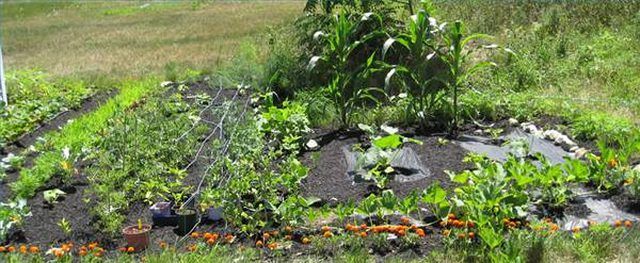
It's easy to grow a vegetable garden, even with limited space. Several types of vegetables do quite well in containers on apartment balconies or patios or small patches of dirt carved out of your lawn. Tomatoes, cucumbers, squash, radishes, carrots, peas and bush beans can all be grown successfully in small areas by someone new to vegetable gardening. Even corn can be part of a small home garden if given the proper care.
Things You'll Need
Planting containers or plot of land
Spade
Rake
Hoe
Gardening or potting soil
Slow-release vegetable fertilizer
Mulch
Seeds or seedlings
Row markers
Stakes or trellises for climbing vegetables
Notebook
Weed blocking ground cover (optional)
Rotary Tiller (optional)
Vegetable specific fertilizer (optional)
Containers or Plot
Decide if you will be using containers for your vegetables or cutting a plot out of your backyard. 10 by 10 feet of land is plenty of room for a vegetable patch.
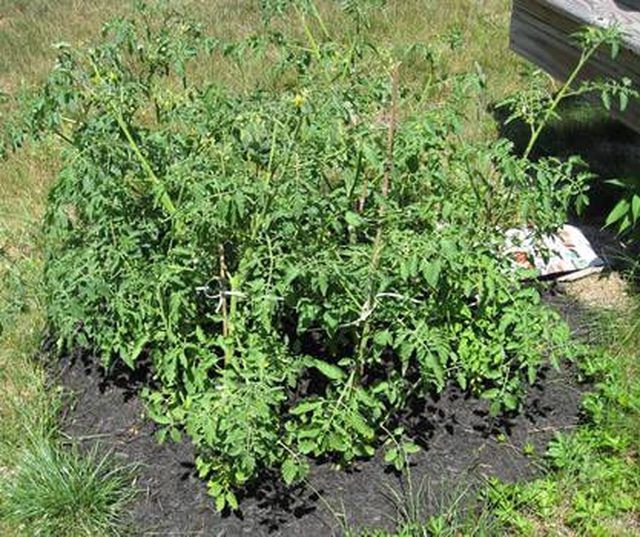
Decide what type of containers you'll use if you want to go that route. Round pots should be large, 14 inches in diameter or more, and rectangular ones should be in the range of 24 by 15 inches. All should be at least a foot deep. Special grow boxes with self-watering and self-fertilizing systems make growing vegetables on a patio very easy.
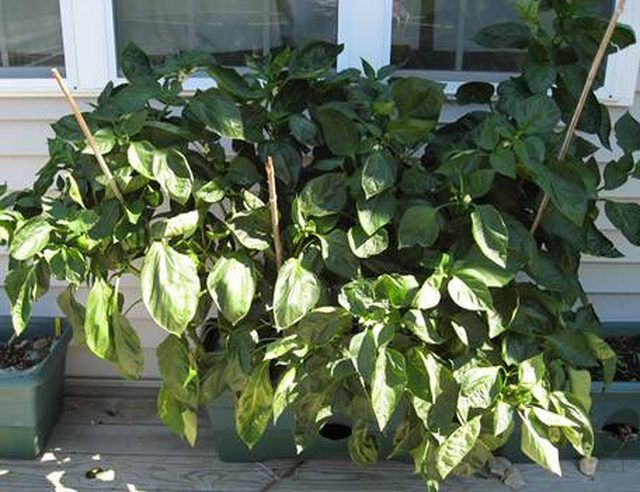
Select a location with plenty of sunlight. Vegetables require at least five hours of uninterrupted sun each day. In most cases, a garden planted on the south side of your house will receive the most daylight.
Draw a diagram of where you want each vegetable to go in the garden. After planting the vegetables, keep notes about their progress.
Soil and Fertilizer
Turn over the soil on your plot with the hoe to break up weeds and remove large rocks. Loosen the soil several inches down, especially if you plan to plant root vegetables like carrots. A rotary tiller makes this job easier.
Add organic matter to boost the soil nutrients. According to USDA Home and Garden Bulletin Number 202, fertile, well-drained soil is essential for a successful vegetable garden. Home improvement stores and garden centers sell convenient premixed bags of soil enhancers. Long term, you may want to consider a compost bin if you have the room.
Work slow-release fertilizer into the soil. For containers, start with potting mix then add the organic material and fertilizers.
Cover any areas where you plan to plant seedlings with black plastic or biodegradable weed block sheets (optional) or mulch. This will keep moisture in the ground and keep weeds from invading your garden. It can also be used on pots.
Place mulch on areas where you plan to sow seeds by hand only AFTER the seedlings have started to emerge. Too much mulch over the seeds could inhibit their growth.
Seed and Plant Selection
Decide which vegetables you want to grow, considering what vegetables you like to eat and how much space you have. Large vegetables like melons and squash and some varieties of cucumbers require a lot space for vines to spread. The backs of all seed packets tell you how far apart they need to be placed.
Purchase seeds or flats of seedlings from your local discount, home improvement store, nursery or online retailer. Vegetables that grow well from seed sown outdoors include peas, radishes, carrots, corn, lettuce and spinach. Vegetables that grow better if started with a seedling are cucumbers, tomatoes, peppers and squash.
Transplant the seedlings into the prepared plot or containers after danger of frost has passed, cutting a small hold in the weed block if necessary. For vegetables that grow along the ground, such as squash, be sure to plant them on "mounds" to prevent flooding. If your area is windy or prone to temperature drops, consider hot caps for the seedlings when they are tiny to keep them warm until they become established and acclimated to the outside air.
Water seedlings after they are in the ground, then cover the area around the base of the seedling with mulch. Mound the mulch so that it prevents water from pooling around the stem of the plant.
Place stakes or trellises near those vegetables that will need support as they grow: tomatoes, peas, and certain varieties of cucumbers.
Create a waterproof plant label and place it in the dirt near the plant or at the head of a row containing the same vegetables. (Plastic knives make inexpensive markers.)
Consider adding vegetable-specific fertilizer to certain plants that can benefit from the extra nutrients. Powdered fertilizer you dissolve in water then distribute is available for corn and asparagus. Slow-release ground pellets or spikes are available to boost tomatoes and give them just the right amount of nutrients all season long.
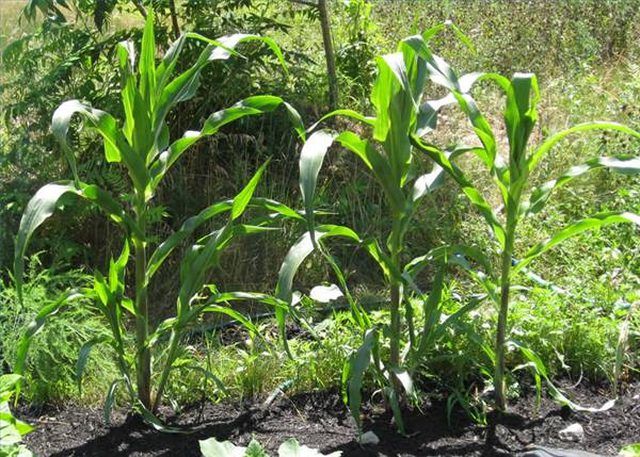
Watering
Set up sprinklers or soaker hoses on your plot in such a way that all areas receive an equal amount of water.
Consider adding a programmable timer to your outside faucet that automatically turns the water on and off according to a daily schedule.
Consider adding a rain barrel to your property to collect rain water that you can then distribute through hoses to your garden.
Monitor the garden for drainage problems. If you notice a section pooling water, dig a ditch from that area to a lower area to help the water drain off better. A garden with mounded beds and valley walkways between rows usually maintains good drainage.
Maintenance
Check your plants' progress daily. Check the soil conditions to see if more or less water is needed.
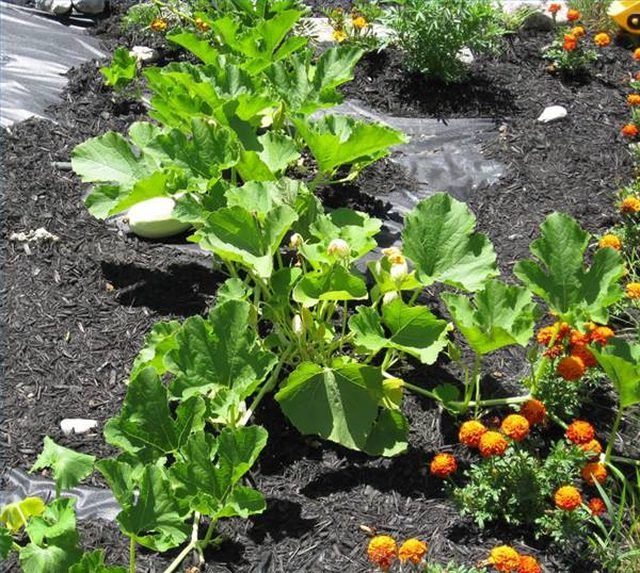
Check for pests that will eat your plants or vegetables. Pick off any you see and kill by hand.
Try to avoid pesticides. They kill beneficial insects, such a bees, that are necessary for pollination. Aphids can be removed from leaves with a squirt of soapy water.
Consider organic pest control solutions, such as lady bugs. If you don't have enough ladybugs in your area, they are available at garden nurseries and online suppliers.
Tips & Warnings
Plant marigolds around the edge of your vegetable plot to attract beneficial insects to your garden and deter pests.
Use the notebook to record the progress of your garden. Some plants may grow better than others and you can use that information when planting the next year's garden.
Pick ripe vegetables frequently to avoid encouraging wild life to snack on them and to keep some varieties, such as bush beans, producing.
Lettuce and peas like cooler weather. Plant them in spring and fall.
Mix radish and carrot seed together before sowing. The radishes will sprout much earlier than the carrots and mark the row for you.
Peppers are slow to germinate and do better if started in flats indoors under controlled conditions.
Do not till leaves or shoots damaged by disease back into the soil. This will cause the disease to spread to other plants, even the following year.